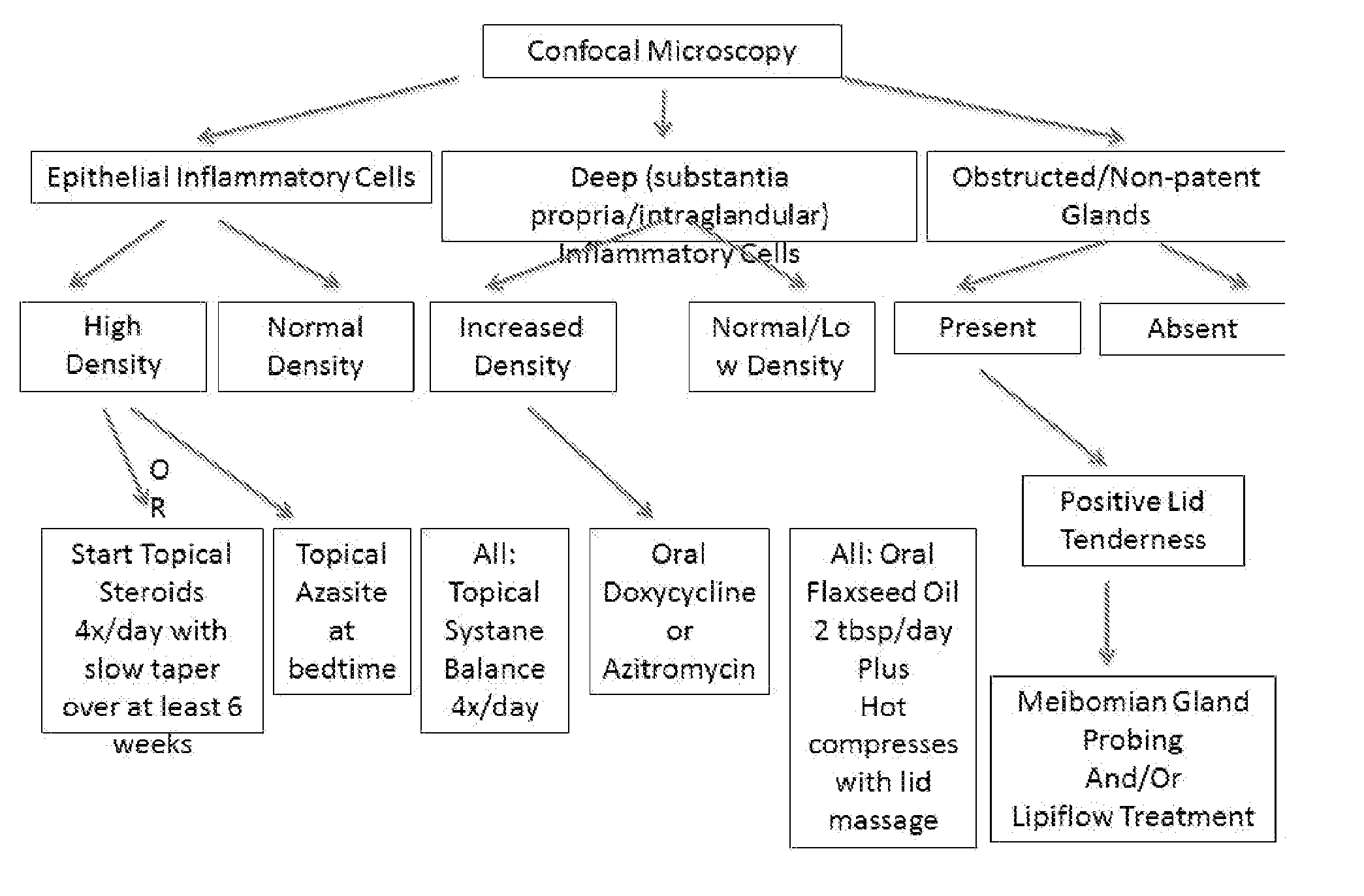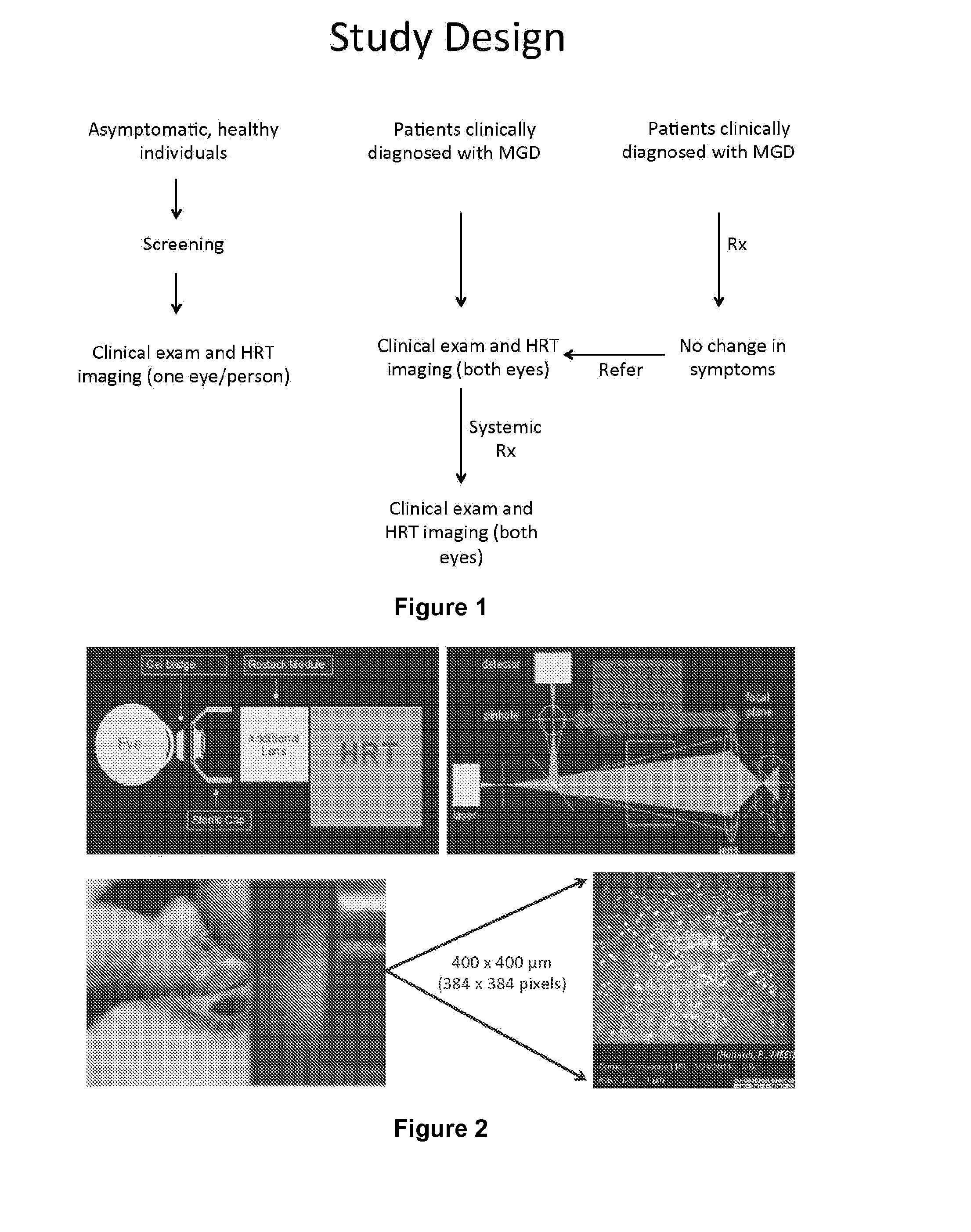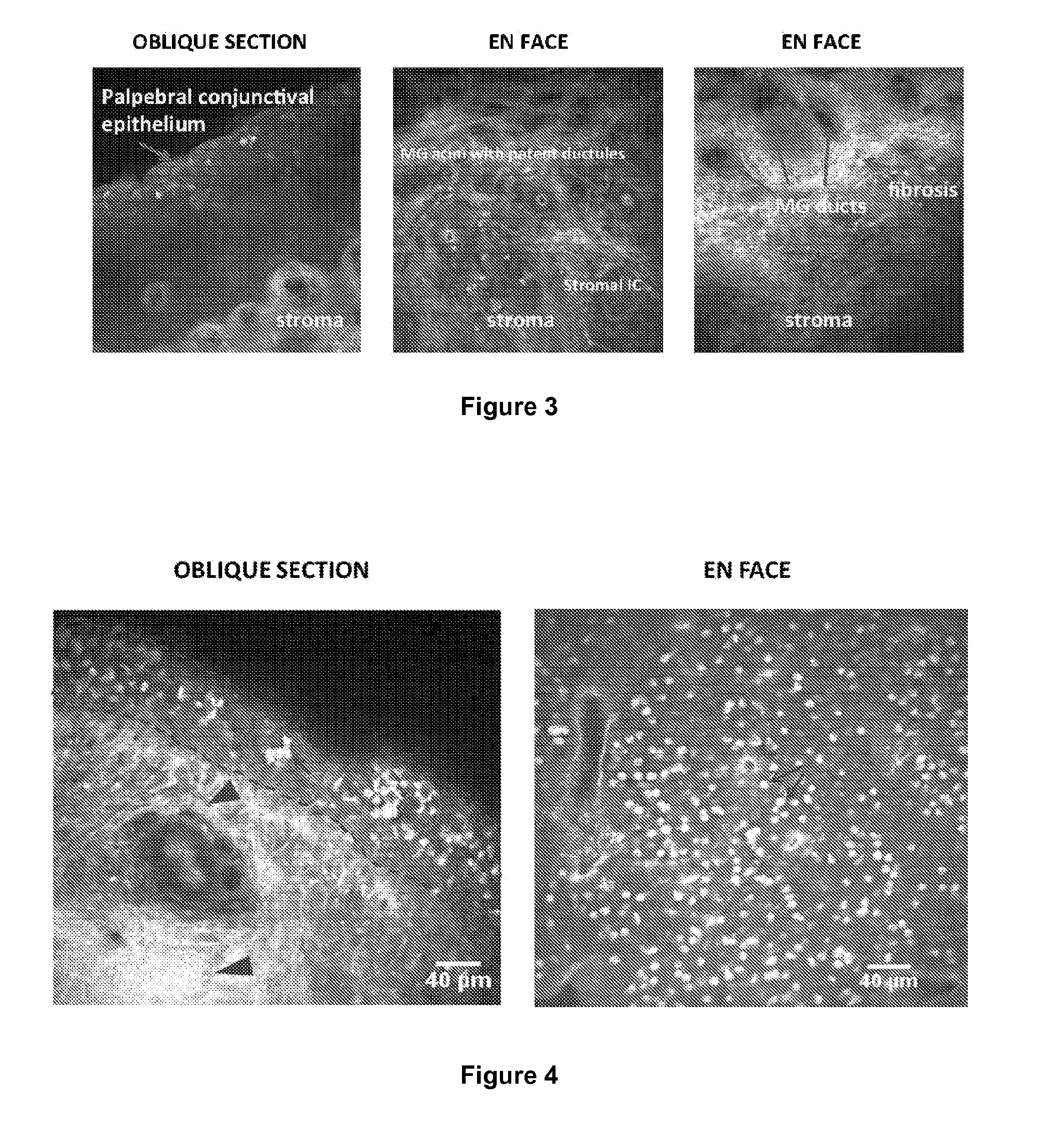Meibomian gland dysfunction
a meibomian gland and dysfunctional technology, applied in the field of meibomian gland dysfunction, can solve problems such as tear film alteration
- Summary
- Abstract
- Description
- Claims
- Application Information
AI Technical Summary
Benefits of technology
Problems solved by technology
Method used
Image
Examples
example 1
In Vivo Confocal Microscopic Study of Eyelid Tissues in Control Subjects and Subjects having MGD
[0153]An in vivo confocal microscopy study of eyelid tissues from control (healthy) subjects and subjects having meibomian gland dysfunction (MGD) was performed. In these experiments, clinical examination of the eye and in vivo confocal microscopic imaging of the eyelid was performed on subjects having MGD prior to and / or after treatment with an orally administered anti-inflammatory antibiotic (e.g., pre-treatment or post-treatment, respectively) (see, FIG. 1). Some of the patients having MGD in this study were previously administered a treatment that did not result in a change in the symptoms of MGD. The demographics of the subjects in this study are shown in Table 1.
TABLE 1Demographics of study participantsAgeOSDICornealTBUT (s)Sex Ratio(mean ±(mean ±Staining(mean ±Group(F:M)SD yrs)SD)(mean ± SD)SD s)Normals2:337 ± 11N / A0 ± 0≧10MGD8:352 ± 1640 ± 13 1 ± 0.75 ± 2
example 2
Changes in Eyelid Tissue Structures in MGD Subjects Receiving Treatment
[0172]The changes in the palpebral conjunctival epithelial immune cells, the palpebral conjunctival substantia propria immune cells, the periglandular immune cells, the intraglandular immune cells, and the patency of meibomian glands at a time point following treatment and a time point prior to treatment were determined in three subjects having MGD (patient #1, patient #2, and patient #3). The data show that each patient had a decrease in the number and density of palpebral conjunctival epithelial immune cells following treatment as compared to the number and density of palpebral conjunctival epithelial immune cells present prior to treatment (FIG. 25). A separate set of images shows that each patient had a decrease in the number and density of palpebral conjunctival substantia propria immune cells following treatment compared to the number and density of palpebral conjunctival substantial propria immune cells pr...
PUM
| Property | Measurement | Unit |
|---|---|---|
| time | aaaaa | aaaaa |
| thick | aaaaa | aaaaa |
| thick | aaaaa | aaaaa |
Abstract
Description
Claims
Application Information
 Login to View More
Login to View More - R&D
- Intellectual Property
- Life Sciences
- Materials
- Tech Scout
- Unparalleled Data Quality
- Higher Quality Content
- 60% Fewer Hallucinations
Browse by: Latest US Patents, China's latest patents, Technical Efficacy Thesaurus, Application Domain, Technology Topic, Popular Technical Reports.
© 2025 PatSnap. All rights reserved.Legal|Privacy policy|Modern Slavery Act Transparency Statement|Sitemap|About US| Contact US: help@patsnap.com



